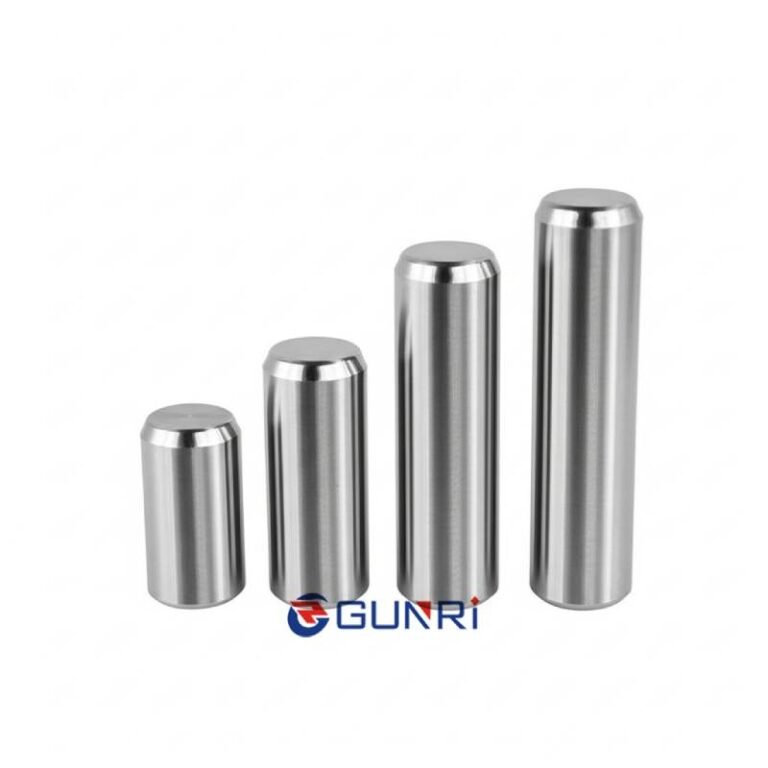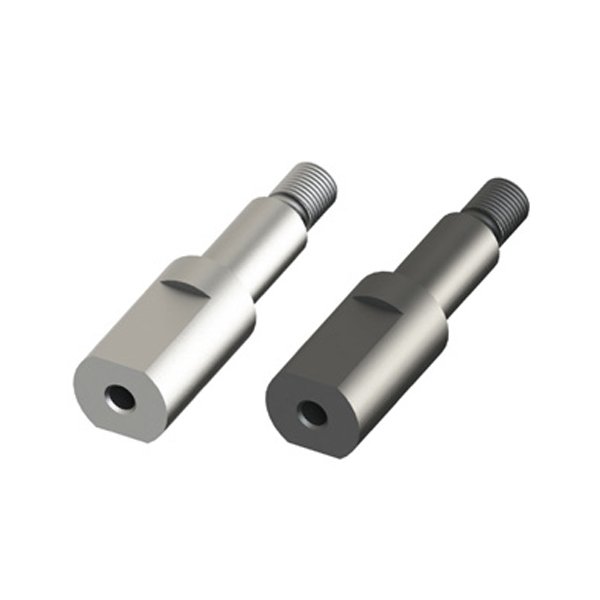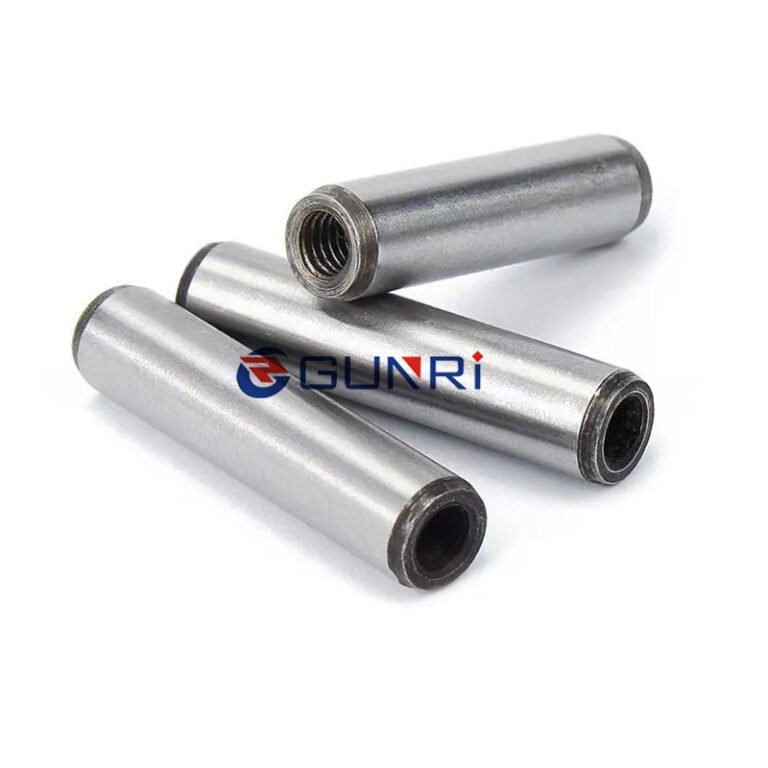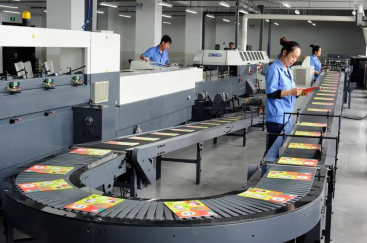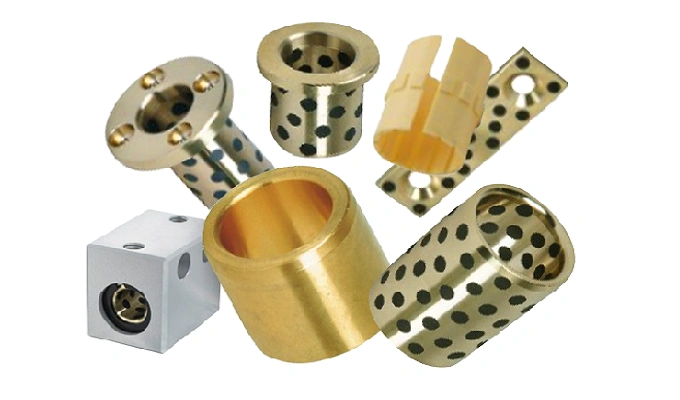Self-lubricating bushings are widely used linear motion components in the field of industrial automation. However, selecting the right type of bushing for specific working conditions is crucial for optimal performance and service life. In this article, we will introduce various types of self-lubricating bushings and their suitable application scenarios.
1. High-Strength Brass Bushing with Embedded Graphite Lubricants
This type offers excellent resistance to high temperatures, corrosion, and impact. It is ideal for heavy-load and low-speed applications and is considered a general-purpose solution with outstanding all-around performance.
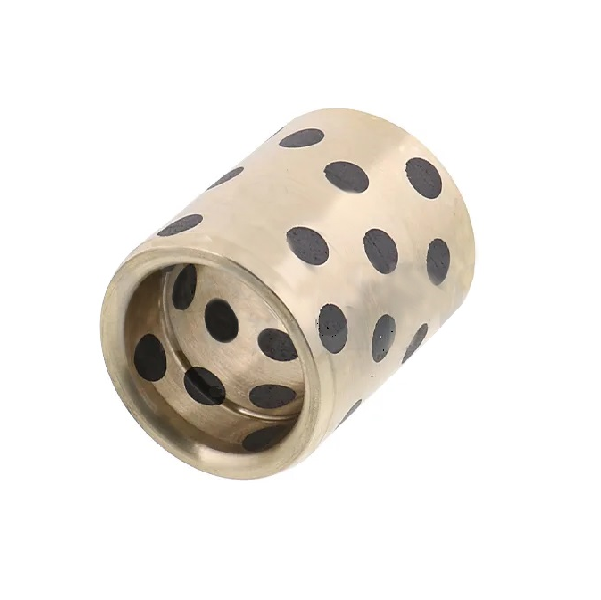
Suitable for:
- Heavy-duty applications
- Low-speed operation
- High-temperature or corrosive environments
2. Special Bronze Cast Self-Lubricating Bushing
Designed for anti-seizure performance and minimal shaft wear, this bushing supports slight movements and operates best with added lubrication. It is suitable for low-load and high-speed conditions.

Suitable for:
- Low-load, high-speed environments
- Applications requiring smooth micro-movements
- Lubricated working conditions
3. Cast Iron Bushing with MoS₂ Solid Lubricant Inserts
These bushings offer high precision and minimal deformation under heat. Compared to brass bushings, they are more cost-effective and suitable for medium-load, low-speed conditions.
Suitable for:
- Medium-duty use
- Low-speed environments
- Cost-sensitive applications
4. Composite Layer Self-Lubricating Bushing
Known for their compact structure, fast production cycles, and low cost, these bushings are ideal for mass production. They work well in heavy-load, low-speed conditions where high precision is not required.
Suitable for:
- Large-volume production
- Heavy-load, low-speed operations
- Budget-friendly projects
5. POM (Polyoxymethylene) Resin-Based Bushing
This type performs well in dusty or dirty environments and operates with low noise. Best suited for low-load, low-speed conditions and large-scale production where precision is not a primary concern.

Suitable for:
- Dirty or dusty workspaces
- Low-noise requirements
- Mass production with low precision needs
6. PTFE (Polytetrafluoroethylene) Bushing
Featuring excellent corrosion resistance and compliance with food safety regulations, PTFE bushings provide higher precision than resin-based ones. They are ideal for low-load, high-speed scenarios.
Suitable for:
- Food-grade or corrosive environments
- High-speed, low-load applications
- Precision-required settings
7. High-Precision Composite Layer Bushing
With high mechanical accuracy, a thin wall design, and ultra-low friction, this type ensures excellent silent operation. Best suited for high-speed, low-load applications.
Suitable for:
- High-speed, low-load environments
- Quiet or noise-sensitive settings
- Precision motion systems
8. Aluminum-Plastic Sliding Bearings
Made from engineering plastics, these bearings are lightweight and highly corrosion-resistant. They offer an effective replacement for rolling bearings, supporting heavy loads, self-lubrication, and low noise.
Suitable for:
- Lightweight design systems
- Corrosive environments
- Rolling bearing alternatives
9. Self-Lubricating Bushing Assemblies

These assemblies, such as steel-shell with brass bushings or aluminum-shell with composite bushings, simplify installation and significantly reduce assembly time. The outer casing is treated for corrosion resistance and visual appeal.
Suitable for:
- Rapid assembly needs
- Aesthetic or finished product requirements
- Modular mechanical systems
If you need further assistance in selecting the right self-lubricating bushing for your application or are looking for customized solutions, feel free to contact our team. We offer expert guidance and OEM services tailored to your industrial needs.

